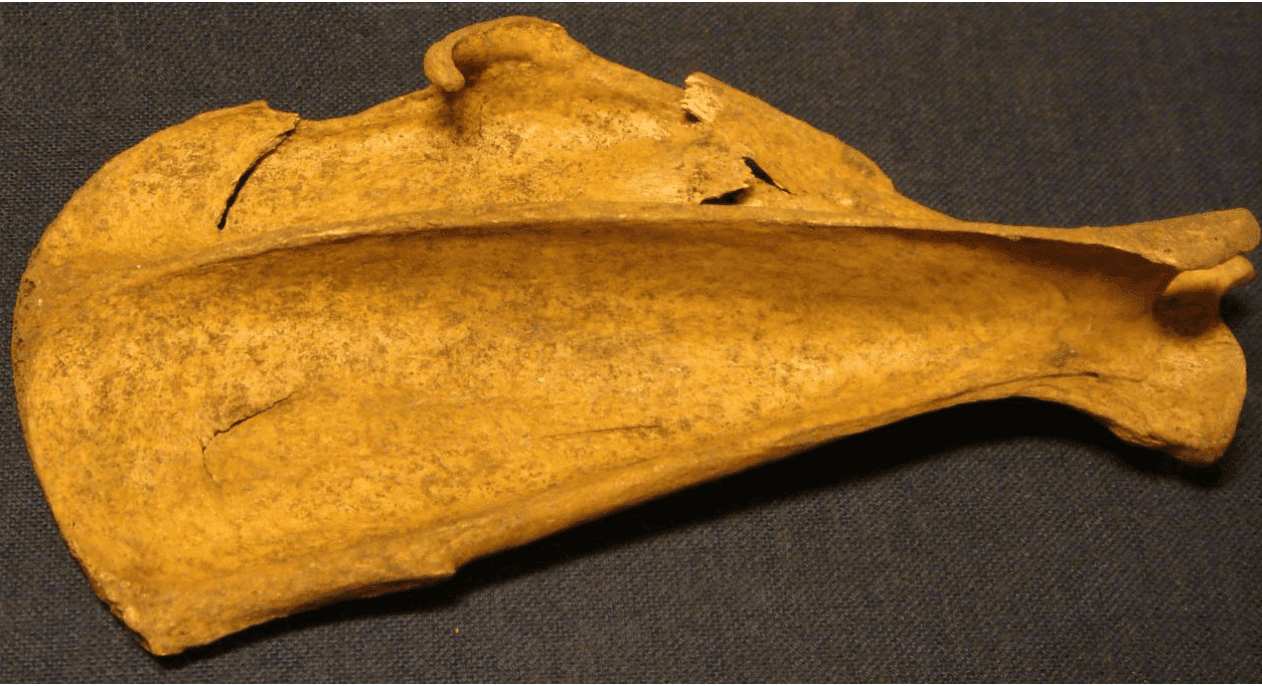Archaeological Research

22.11.2024Evelyn Ýr
After writing the post about Dogs during the Settlement Age, I wanted to delve deeper into archaeological studies to enhance my knowledge and gain more insight.
Little is known about the appearance of dogs during the Settlement Age, but it is clear that they accompanied the settlers to Iceland in the 9th century.
We know that dogs served various purposes and therefore differed in type. Some followed chieftains in both peace and war, such as Sámur, Gunnar's dog at Hlíðarendi, who is believed to have been an Irish wolfhound used for hunting. Small dogs, on the other hand, were known as pets of the aristocracy and clergy.
Most settlers were farmers. Their livestock roamed freely and did not stay in groups, as the animals had no natural predators and dispersed widely. Dogs were therefore used to herd the livestock together and drive them home. Neither wolfhounds nor small dogs were suitable for this task in Iceland's vast landscape. However, sheepdogs became indispensable companions for farmers.
Archaeological research has shed light on the types of dogs present during Iceland's early settlement years and on the relationships between humans and dogs at the time. Dog bones have been found in 32 Viking Age burials.
Animal bone studies in Iceland began in the 19th century. For example, a Viking Age burial was discovered at Hafurbjarnastaðir in 1868, where bones of a horse and a dog were excavated.
"Dogs in the Viking Age varied more in appearance than the Icelandic breed today, and they were sometimes buried with humans. It was rarer to kill and bury dogs, and this practice was not as established as horse sacrifices. Dogs always shared a grave with a human, but sometimes only part of their body was buried. Marks on the bones of some dogs indicate that they were well cared for in life, supporting the interpretation that they were buried with their owners." (Rúnar Leifsson, Ritual Animal Killing and Burial Customs, 2018).
In studies of dog bones, old, healed fractures have been identified in some cases, and sometimes teeth are missing. It is believed that the dogs were buried in this condition. Such injuries may indicate violence or mistreatment, which is rarely seen in connection with livestock. However, the relationship between humans and dogs has always been characterized by strong emotional bonds. Dogs were much closer to their owners than other animals and often served as companions and loyal friends. (Rúnar Leifsson).
It is also interesting to read about how dogs were placed in human graves. Unlike horses, they always accompanied a human and were never buried alone. The placement of the dogs strongly indicates close bonds between humans and animals.
Most commonly, the dog's body was placed at the feet of the deceased. This might have mimicked a dog crouching and resting at its owner's side, just as it would in life. In two cases, the connection between human and dog was even closer. In Gautlönd, in southern Þingeyjarsýsla, a man was buried lying on his side in the so-called "fetal position," with a dog placed under one of his knees. A similar placement of a dog is likely in a grave at Dalvík (Brimnes) in Eyjafjörður. Archaeologists there concluded that the deceased was buried in a seated position, with the dog resting between their legs.
It is unclear how dogs were killed for burial rituals in most cases. This is partly due to poor preservation and sometimes due to the random selection of samples during excavation. It may also be because some methods of killing left no traces on the bones. The only recorded evidence so far suggests that it was done using poleaxing (blunt force).
Beyond Rúnar Leifsson's doctoral dissertation (written in English), which I have largely used as a source for this post, Kristján Eldjárn's book Kuml og haugfé (1956) is an invaluable resource for those interested in archaeological studies of graves and burials in the 20th century.
Additionally, the publication Margt býr í moldinni by the Skagafjörður Heritage Museum, which discusses research in the archaeological environment of Skagafjörður from 2000 to 2005, is very interesting and provides accessible knowledge for the public.
In research conducted in Skagafjörður, dog bones were found at the places Kolkuós and Keldudalur.
Kolkuós was one of the main trading ports in Iceland from the Settlement Age until the 16th century and is located near Hólar, which became a bishop's seat in 1106. Among the finds at Kolkuós were dog bones, including those from a Maltese lapdog, a pet associated with European aristocracy during the Middle Ages. This is the first time such remains have been discovered in Iceland.
At the farm Keldudalur, a burial site and remnants of a Christian cemetery were accidentally discovered. Dog bones were found in two graves. In one, bones from an Icelandic dog were identified, while in the other, remains of a so-called "nobleman’s dog" or "Greyhound" were uncovered. Large dogs are known from the sagas, such as the aforementioned Sámur, Gunnar’s dog at Hlíðarendi. Such dogs were not owned by commoners, and these finds, like the lapdog bones at Kolkuós, suggest that dogs were imported as status symbols for local chieftains. (Margt býr í moldinni).
Picture: right dog scalpula, found in Vatnsdalur. From: (Rúnar Leifsson. Ritual Animal Killing and Burial Customs. 2018).
Contact
Lýtingsstaðir, 561 Varmahlíð.
+354 893 3817
[email protected]


